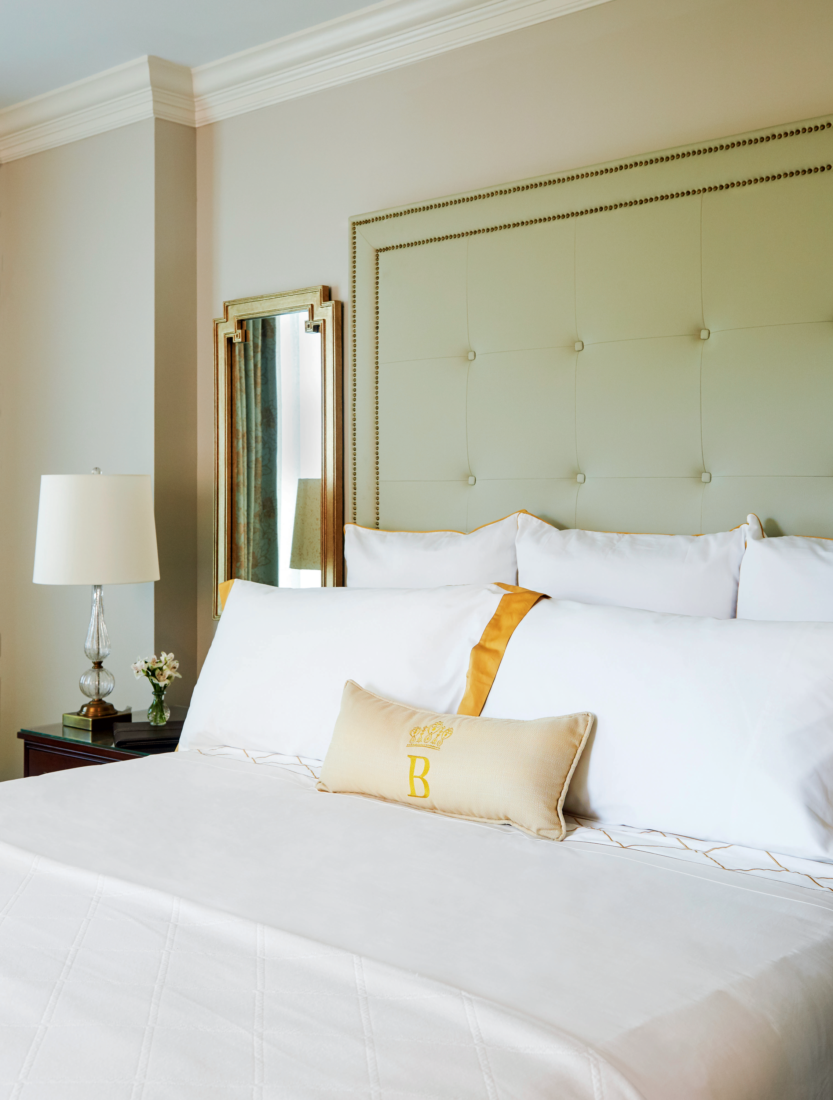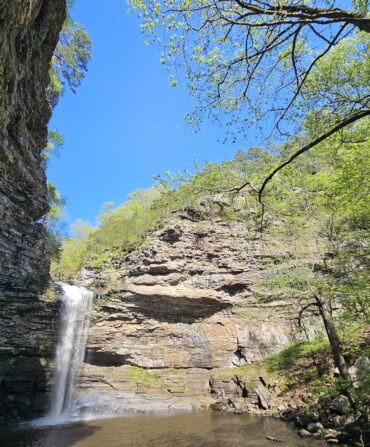Despite the centuries of history woven into its wrought-iron garden gates and winding cobblestoned alleys, much of Charleston, South Carolina, has popped up in the last fifty years. “Back in the seventies, we used to say you could roll a bowling ball down King Street and not hit a person or a car,” says Michael Bennett, the owner of Bennett Hospitality, which, among other things, owns and operates chain hotels in the city and beyond. Now, in addition to bumping into packs of tourists and newcomers darting in and out of restaurants and shops, that bowling bowl would also roll past countless construction sites, many of them for new hotels—including, until its debut in mid-January, Bennett’s first bearing his own name. Even Charlestonians with crane fatigue, though, are taking note of the Hotel Bennett.

Photo: Matthew Suchodolski
The Hotel Bennett from above.
On the northwest corner of Marion Square, the city’s central park, Bennett has pulled off an elegant Southern spin on a grand European hotel, one that skillfully fuses an old-world glamour with Lowcountry touches. Among the marble and mirrors, for instance, the neoclassical nine-story resort features chandeliers resembling crystal cast nets as well as a 360-degree mural by the Athens, Georgia, artist Jill Biskin depicting the view of the Cooper River from Bennett’s own home and a scene of eighteenth-century Charleston as viewed from the harbor. Work from local artists hangs throughout the lobby, and furniture and fabric embroidered with crewelwork inspired by the city’s colonial period outfit the guest rooms.
“Our family’s been here a long time, so this was exciting for me,” Bennett says. His parents were both born in the nearby Eastside neighborhood, and his father shined shoes during the Great Depression across the street from where the hotel now stands. Bennett grew up north of Hampton Park, and over the years he began to aid Charleston’s transformation by renovating buildings worn down by time. “This is the biggest and most important project that I will ever do,” he says of the hotel, which was almost two decades in the making. “So I named it after my family.” And with the opportunity to, finally, build a hotel of his own from the ground up came the chance for him also to pay homage to his hometown and to the site’s history.
The plot of land where the Hotel Bennett sits was once the location of the west wing of the old Citadel campus—the Embassy Suites next door still maintains the military college’s original facade—before eventually becoming the Charleston County Public Library. After the library relocated a few blocks east, the empty building was demolished, so Bennett tipped his hat to that past. In Camellias, the champagne and caviar bar inspired by the design of Fabergé eggs, pink marble reclaimed from the library adorns the bar and tabletops. Upstairs, guest rooms feature shelves full of books alongside views of downtown.

Photo: Jacqueline Stofsick
A guest room.
The hotel offers plenty to entice those not looking to spend the night, too. Bennett, for instance, brought on executive chef Michael Sichel from the celebrated Galatoire’s, a grande dame of Creole cuisine in New Orleans, to oversee the hotel’s signature restaurant. There, the Europe–meets–coastal Carolina theme plays out in dishes such as broiled local oysters béchamel, smoked trout caviar, and redfish barigoule with sweet basil broth. Beyond the lobby, a French patisserie transforms into a wine and charcuterie joint at night. But the most alluring hangout is destined to be the ninth floor, where a Mediterranean-style restaurant and bar opens onto the rooftop patio. The adjoining pool, a space accessible only to hotel and spa guests during the day, shifts into a lively cabana-service hot spot open to the public after the sun sets.
“We live in the renaissance,” Bennett says of Charleston. “The finest era in the history of this great, proud city.” It would be tempting to chalk up such puffery as that of a civic cheerleader—or someone hoping to lure visitors to his new lodging. But for anyone watching the bustle from the roof of the Hotel Bennett, the sentiment rings as true as the church bells in the Holy City’s steeples.








